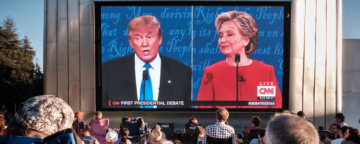Researchers from the Annenberg Public Policy Center presented work on public attitudes toward science at the American Association for the Advancement of Science meeting in Boston.


Researchers from the Annenberg Public Policy Center presented work on public attitudes toward science at the American Association for the Advancement of Science meeting in Boston.

A study finds that early drug use strongly predicts substance abuse only if it’s followed by continuing drug use. Early experimentation with alcohol or marijuana isn't necessarily a risk factor for addiction.

A new study of cigarette warning labels finds that “emotional” images proposed by the government to complement text warnings are more believable and provide greater motivation to quit smoking than equally emotional but irrelevant images or text warnings alone.

Science curiosity appears to counteract people’s tendency to seek out only information that supports their political biases, according to a new study finding that people who are science-curious are more willing to grapple with surprising information.

The amount of gun violence in top-grossing PG-13 movies has continued to exceed the gun violence in the biggest box-office R-rated films, according to an APPC analysis published in Pediatrics. PG-13 movies also usually feature gun violence without showing consequences such as blood and suffering, researchers said.

Nearly half of the news stories over last year’s holiday season that linked the holidays and suicide perpetuated the myth that there's an increase in suicide from Thanksgiving through January, according to a new analysis.

Even liberals and moderates who are more likely than conservatives to be suspicious of Fox News can be influenced by a misleading article on FoxNews.com about Arctic sea ice trends, researchers found.

In 2014, 35,000 walruses crowded ashore on an Alaskan beach instead of resting on ice floes. In a newly published case study, researchers studied TV news coverage of the walrus "haul-out" and people's selective exposure to it.

Pope Francis’ 2015 encyclical on the environment, “Laudato Si’,” did not rally broad public support for climate change among Catholics and non-Catholics, according to a new study from researchers at the Annenberg Public Policy Center.

A new Annenberg Public Policy Center study of the first 2016 presidential debate finds that what Hillary Clinton and Donald Trump they say about the issues – and don’t say – affects what viewers learn about their plans.